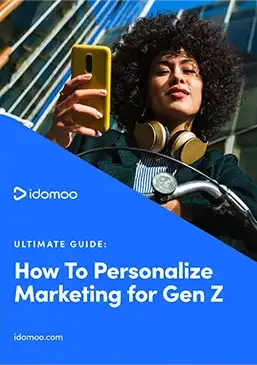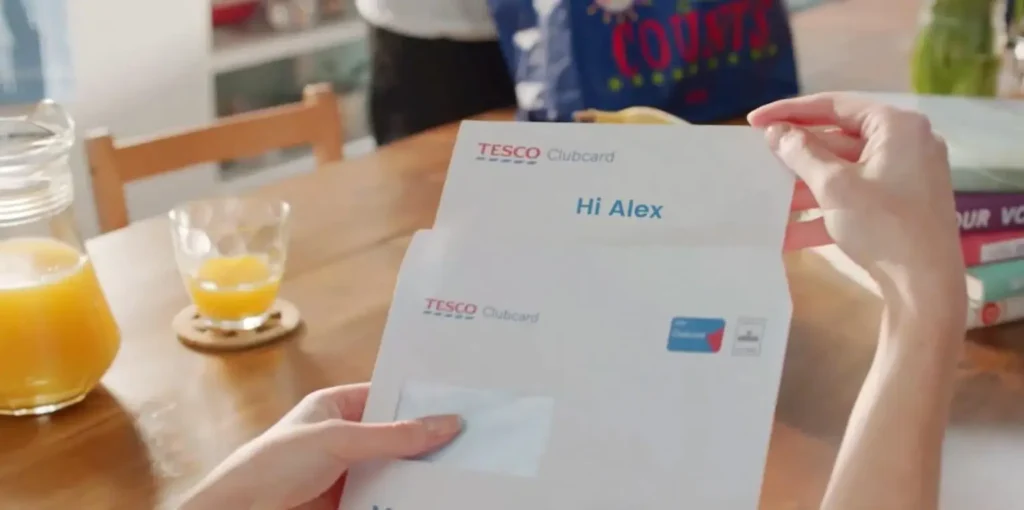Gone are the days of customers choosing to work with an insurance company simply because there aren’t any other options. We don’t just get our news from word-of-mouth meetups with friends anymore, just as we don’t choose our insurance or financial companies based on who is available in our area.
Instead, choosing to work with an insurance company is a longer, more thought-out process. Potential customers consider everything from a company’s online reviews to their customer service to their policies and price. Because of this, it’s more important than ever to build customer relationships that are personal, trustworthy and will stand the test of time.
Let’s dive into why insurance companies should prioritize building relationships throughout the customer journey and how to get started.
What Does a Customer Relationship in Insurance Involve?
Customer relationships in the insurance industry are the emotional connections and trust built between insurance providers and their clients, which extend beyond mere transactions.
These relationships are defined by open communication, personalized service and ongoing support to ensure that customers feel valued and understood. Henry Ford described these relationships well when he said, “It’s not the employer who pays the wages. Employers only handle the money. It’s the customer who pays the wages.”
Insurers are responsible for protecting their clients financial well-being, which is no small task. Because of this, strong relationships help foster customer loyalty, reduce churn and encourage a long-term partnership between insurer and client.
Insurers who prioritize customer relationships are the ones that set themselves apart in one of the most competitive industries.
Why Building Relationships in the Insurance Industry Matters
Because insurance companies engage with and manage millions of customers online, customers are often left disengaged and with little appetite for further interactions. But those strong relationships matter.
- Gallup found that engaged insurance customers purchase 22% more insurance products and stay customers 4 years longer.
- More insurance customers switch providers (25.4%) than plan to (18.5%). This means that 37% more consumers end up switching insurance providers than want to.
- Loyal customers are 4x more likely to refer a friend.
Understanding Today’s Customers
In order to understand how to build strong customer relationships, we first need to understand today’s customer.
One important group to pay attention to? Millennials. Well into their late 20s to early 40s, this cohort is now settling into established careers, starting families and making major financial moves. And as the generation with the most buying power, millennials’ economic influence is something that insurance providers cannot afford to ignore.
But Gen Z is joining the fray. Zoomers are hitting many of life’s major milestones: getting their first cars, starting their first jobs and thinking about home-buying for the future.

And while these two generations have their differences, they also have a lot in common.
Gen Z and millennials alike are well-informed and embrace change. They’re no stranger to technology and usually consume content on several devices — especially mobile. Gen Z makes up nearly 40% of all mobile users and millennials spend at least 5 hours a day on their mobile devices.
Post on
Both generations also respond well to video. Compared to 2019, 73% of Gen Z and Millennials watched more videos on their smartphone in 2020 and more than half of those surveyed say that this increase in viewing is here to stay.
Both Gen Z and millennials are also struggling to connect with their insurers. A Gallup poll found that, compared to other generations, millennials are 3x less likely to actively engage with their insurers and 4x more likely to actively disengage from them. Another survey found that 43% of Gen Z feels uninformed about available insurance products.
All in all, these groups are disrupting the status quo and aren’t afraid to demand more from their insurers. Specifically, they’re looking for digital communications that are:
- Personalized: These generations expect the products and services they use to be tailored to them and for the companies they interact with to engage with them personally. A new study shows Gen Z and millennials are 5x more likely to want to receive a personalized video than a non-personalized one.
- On demand: Be it products, content or services, today’s consumers want everything immediately. Amazon wins over customers with next-day shipping. Netflix delivers entire TV seasons in a day. Being in real time or near real-time is key to success.
- Authentic: Today’s consumers want the brands they buy from to show their commitment to making the world a better place. 91% of millennials are willing to switch to brands associated with a good cause.
- Watchable: Video is on the rise and both Gen Z and millennials are a driving force behind this trend. Zoomers spend about 3.4 hours a day watching videos online.
- Experiential: More than 3 in 4 (78%) of millennials would rather spend money on an experience or event over buying something. This is a good lesson to remember, especially when it comes to addressing this demographic of customer needs.
How To Build Strong Customer Relationships in the Insurance Industry
So we know that the insurance industry is competitive and requires connecting with notoriously hard-to-reach audiences, so how do you build customer loyalty, increase your customer lifetime value and stand out in the industry? Here are a few tips.
Listen to Your Customers
In every industry, including the insurance industry, it pays to listen to your customers’ needs and take their feedback into consideration. Customers want to feel heard and understood, especially when they’re putting their finances (and lives!) on the line. Actively listening to customer expectations and feedback is a great way to build strong relationships and improve customer satisfaction.
There are a few ways to encourage customer feedback. Consider offering multiple channels for communication, such as phone, email, live chat and social media, ensuring that customers can reach out in the way that is most convenient for them. In addition, regularly ask for customer opinions through surveys, follow-up calls, or feedback forms after claims or service interactions.
The most important step, though, is using this feedback to make tangible improvements. Whether it’s simplifying the claims process, adjusting communication methods, or offering more personalized product recommendations, listening to customer needs and addressing them is a great way to build strong customer relationships.
Develop Trust
When building customer relationships, trust is everything and building trust with insurance clients starts with transparent and consistent communications. This is especially important for new customers who don’t really know you yet. From the initial policy consultation to managing claims, you want to show that you have your clients’ best interests at heart.
Clear communication, including explaining coverage options, terms and costs in an easy-to-understand way without hidden surprises or confusing jargon, helps clients fully comprehend what they’re purchasing. Therefore, they’re more likely to trust their provider.
For example, check out this Personalized Video we made for AAA that covers the client’s auto insurance policy.
This Next Generation video helps to build trust with the client by communicating important policy information clearly and in an engaging way. It talks to the customer like the individual they are and is hyper-tailored to their needs and experience.
Consistency is also crucial for building trust in the insurance industry. Whether it’s through regular updates, timely responses to questions, or informing customers about new products that are relevant to their needs, consistent actions reinforce your company’s credibility.
Personalize the Customer Experience
As noted above, engaged customers are worth more. A customer who is actively engaged purchases more insurance products from their primary carrier, stays a customer longer, is more likely to sign up for other financial products and is more likely to recommend the carrier to an acquaintance.
But how do you make sure your customers are engaged? The secret is using customer data for good, that is, for personalization.
At Idomoo, we’ve found that Personalized Videos are a highly effective way to engage with customers, especially younger demographics, in the insurance space. As it turns out, the “effort” of watching a short Personalized Video is acceptable — even welcome — for today’s busy consumer.
Take a look at this video from USAA, and see how much you can cover in just over a minute.
Tailored to each and every recipient, a video like the one above gives the viewer the 1:1 customer interaction they want in the engaging digital format they love. Plus, Personalized Videos work on any channel, from email to social media to in-app.
A relationship like this is the closest thing today’s insurer can get to meeting every client face-to-face. It’s an engaging experience that makes every individual feel valued as a customer, while also helping insurers avoid commoditization.
Personal touches work especially well during onboarding. Set the tone for your customer’s experience with a Personalized Video that gives them a warm welcome.
Putting everything customers need to know in a video made just for them creates an onboarding experience that’s easy rather than overwhelming.
We’ve consistently seen Personalized Videos deliver better business results in the insurance space. MetLife reported a 12 point NPS increase as a result of their personalized policy renewal video. AXA saw an 8x increase in conversion rates. And another carrier achieved an 85% renewal rate with their campaign.
Encourage Customer Loyalty
Encouraging customer loyalty isn’t just about offering the best price or policy, it’s about creating a sense of value that goes beyond the basics of customer retention. To encourage loyalty, focus on delivering excellent customer service, personalized experiences and showing your clients that you truly understand their needs. When clients feel like you’re going the extra mile to make sure they’re taken care of, they’re much more likely to stick around and become brand advocates to refer you to others.
One way to foster loyalty is by regularly following up to foster that personal connection. This could mean checking in regularly to see if their coverage still suits them, offering special deals, or tailoring services to fit their unique situation. When clients see that you’re paying attention to their individual needs, they’ll feel valued and be more inclined to stay with you over the long haul.
Check out this loyalty video we made for Select Health, a health insurance company.
You can also boost loyalty by offering rewards or incentives. Think about discounts for long-term customers, bundled policy options, or even a referral program. Personalized loyalty programs make clients feel appreciated and give them more reasons to keep choosing you.
Use a Customer Relationship Management System
A Customer Relationship Management (CRM) system can be a game changer for insurance companies as they seek to build good customer relationships and improve the customer experience.
A CRM helps you keep track of all the important details about your clients—their policies, interactions, claims history, and even personal preferences. Instead of sifting through scattered notes or relying on memory, a CRM keeps everything organized in one place, making it easy to stay on top of each client’s needs and provide more personalized service. With a CRM, you can do things like:
- Set reminders for policy renewals
- Send out personalized emails or messages
- Keep track of any interactions you’ve had with the client.
This personalized approach makes your messaging more targeted and relevant, which shows clients that you’re paying attention and care about their individual needs. No one likes feeling like just another number, and a CRM helps prevent that by keeping everything you need to know about each client in one spot.
Building Good Customer Relationships in the Insurance Industry
Building strong relationships with customers is the key to improving engagement, encouraging loyalty and increasing referrals.
The key to that engagement is to communicate with customers on their own terms. Personalize every touchpoint with dynamic videos that speak to what your customer cares about, communicate frequently and transparently and celebrate your customers for the individuals that they are. Deliver this personalization in-app, by email or even SMS for an omnichannel approach. And use a powerful platform, like our Next Generation Video Platform, to deliver those videos in real time and at scale.
To try it for yourself, schedule a 15-minute call. We’d love to hear from you.






